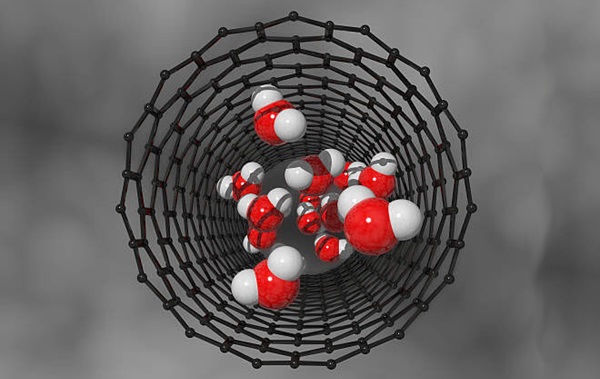Development of Rye-Wheat Bread Containing Flaxseed Flour and Rice Husk Dietary Fiber
Downloads
The study aims to improve the nutritional and biological value of rye-wheat bread by incorporating defatted flaxseed flour and dietary fiber from rice husks. Conducted in two stages, the research first introduced defatted flaxseed flour into bread formulations at 5–20% of wheat flour weight. In the second stage, rice husk-derived dietary fibers were added in powdered form at 0.3–0.7% of the total rye-wheat flour mass. The effects of these additives on dough's physicochemical and rheological properties were analyzed. Results indicated that adding flaxseed flour and dietary fibers produced medium-strength dough, ensuring adequate bread volume. Optimal dosages were identified as 15% flaxseed flour (to wheat flour weight) and 0.5% dietary fiber (to rye-wheat flour mass). The study also proposed technological modes to enhance consumer properties of the bread. The research demonstrated increased nutritional value, with a 39.7% rise in protein content, a 2.8-fold fiber increase, higher levels of minerals, and significant vitamin boosts (C: +0.375 mg/100 g; E: +3.55 mg/100 g). A 15.4% reduction in carbohydrates was also noted. Additionally, the additives improved gas-holding capacity, crumb structure, and moisture retention, reducing staling and extending shelf life.
Downloads
[1] Doronin, A. F., Ipatova, L. G., & Nechaev, A. P. (2009). Functional food products. Introduction to technology (228 pp.). Moscow: DeLee Print.
[2] Ipatova, L. G., Kochetkova, A. A., Nechaev, A. P., Tarasova, V. V., & Filatova, A. A. (2007). Dietary fibers in food products. Food Industry, (5), 8–10 (In Russian).
[3] Kornen, N. N., Pershakova, T. V., Shakhrai, T. A., & Fedoseeva, O. V. (2016). Food and biologically active additives from secondary plant resources. Scientific Journal of KubGAU, (121), 1–17. doi:10.21515/1990-4665-121-064.
[4] Novozhilova, E. S., & Rukshan, L. V. (2024). Aspects of the use of leguminous flour for enriched and dietary products. Food Processing Industry, (5), 17–19. doi:10.52653/ppi.2024.5.5.004. (In Russian).
[5] Martirosyan, V., Tyurina, O., Karabinskaya, Y., Borisova, A., & Peshkina, I. (2023). Application of textured wheat flour in bakery technology. BIO Web of Conferences, 64, 01002. doi:10.1051/bioconf/20236401002.
[6] Shmalko, N. A. (2021). Rational technologies of wheat bakery products with the use of amaranth flour. News of Universities: Food Technology, (4), 382. doi:10.26297/0579-3009.2021.4.1.
[7] Jain, P. R., H. R. B., H. P. Soundararajan, V. S., M. K. Sarvepalli, K. R., & Ravi, L. (2024). Functional food development using Ulva fasciata and its acute and chronic health benefits on Drosophila melanogaster. Nutrire, 49(2). doi:10.1186/s41110-024-00289-0.
[8] Durand, K., Daassi, R., Rodrigue, D., & Stevanovic, T. (2024). Study of biopolymers and silica recovery from pre‑hydrolyzed rice husks. Biomass Conversion and Biorefinery. doi:10.1007/s13399-024-05445-0.
[9] Shah, A. U. R., Jalil, A., Sadiq, A., Alzaid, M., Naseem, M. S., Alanazi, R., Alanazi, S., Alanzy, A. O., Alsohaimi, I. H., & Malik, R. A. (2023). Effect of rice husk and wood flour on the structural, mechanical, and fire‑retardant characteristics of recycled high‑density polyethylene. Polymers, 15(19), 4031. doi:10.3390/polym15194031.
[10] Kalinina, I. V., Fatkullin, R. I., & Naumenko, N. V. (2014). To the question of the use of flaxseed flour in bakery and confectionery production. Bulletin of SUSU. Series Food and Biotechnology, 2(4), 50–56.
[11] Shim, Y. Y., Gui, B., Arnison, P. G., Wang, Y., & Reaney, M. J. T. (2014). Flaxseed (Linum usitatissimum L.) bioactive compounds and peptide nomenclature: A review. Trends in Food Science & Technology, 38(1), 5–20. doi:10.1016/j.tifs.2014.03.011.
[12] Eyres, L. (2015). Flaxseed Fiber–a superfood? NZIC Oils and Fats Group. doi:10.13140/RG.2.1.3678.2803.
[13] Russo, R., & Reggiani, R. (2014). Variation in the Content of Cyanogenic Glycosides in Flaxseed Meal from Twenty‑One Varieties. Food and Nutrition Sciences, 5(15), 1456–1462. doi:10.4236/fns.2014.515159.
[14] Garna, H., Mabon, N., Nott, K., Wathelet, B., & Paquot, M. (2006). Kinetic of the hydrolysis of pectin galacturonic acid chains and quantification by ionic chromatography. Food Chemistry, 96(3), 477–484. doi:10.1016/j.foodchem.2005.03.002.
[15] Strelyukhina, A. N., & Lyalin, A. V. (2024). Theoretical and practical aspects of technologies for enriched bakery products with freezing of semi‑finished products. Food Processing Industry, (10), 46–48. doi:10.52653/ppi.2024.10.10.008. (In Russian).
[16] Bayysbaeva, M. P. (2020). Methods for assessing the quality of bakery products: a textbook (171 pp.). Almaty. Available online: http://library.atu.kz/files/1508.pdf (accessed on May 2025) (In Russian).
[17] GOST P 51404‑99. (2001, January 1). Physical characteristics of dough. Determination of rheological properties using farinograph. Available online: https://docs.cntd.ru/document/1200028477 (accessed on May 2025)
[18] GOST R 51415‑99. (2001, March 1). Physical characteristics of the dough. Determination of rheological properties using alveograph. Available online: https://docs.cntd.ru/document/1200028483 (accessed on May 2025)
[19] Maximov, A. S., & Chernykh, V. Y. (2004). Laboratory practice on rheology of raw materials, semi‑finished and finished products of bakery, pasta and confectionery production (163 pp.). Publishing Complex MSUPP.
[20] Rebrova, I. A. (2010). Planning of the experiment: textbook (105 pp.). Omsk: SibADI. Available online: https://www.studmed.ru/rebrova-i-a-planirovanie-eksperimenta_95a45cfa989.html (accessed on May 2025) (In Russian).
[21] Spirin, N. A., Lavrov, V. V., Zainullin, L. A., Bondin, A. R., & Burykin, A. A. (2015). Methods of planning and processing of engineering experiment results: textbook (290 pp.). Yekaterinburg: LLC "UINC". Available online: https://elar.urfu.ru/handle/10995/39965 (accessed on May 2025) (In Russian).
[22] Anisimova, L. V., & Ahmed, S. O. I. (2017). Rheological properties of dough from a mixture of wheat and whole‑milled oat flour. Polzunovsky Vestnik, (3), 9–13. (In Russian).
[23] Akulich, A. V., Timakova, R. T., Samuylenko, T. D., & Lukinykh, M. I. (2023). Research on the Rheological Properties of Dough Based on Dry Flour Semi‑Finished Products Using Rye Flour. Food Industry, 8(3), 6–17. doi:10.29141/2500-1922-2023-8-3-1.
[24] Yamashev, T. A. (2012). Study of structural and mechanical properties of dough from a mixture of wheat and pea flour with the use of farinograph. Bulletin of Kazan Technological University, (15), 115–117. (In Russian).
[25] Koneva, S., Egorova, E., Kozubaeva, L., Reznichenko, I., & Reznichenko, I. (2019). The Effect of Flaxseed Flour on the Rheological Properties of Dough Made of Flaxseed and Wheat Flour and Bread Quality. Food Processing: Techniques and Technology, 49(1), 85–96.
[26] Baiysbayeva, M., Iskakova, G., Izembayeva, A., Batyrbayeva, N., Dikhanbayeva, F., & Daribayeva, G. (2021). Development of technology for macaroni products based on flour of grain crops and ion-zoned water. Eastern‑European Journal of Enterprise Technologies, 1/11(109), 51–60. doi:10.15587/1729-4061.2021.225001.
[27] Dufour, M., Chaunier, L., Hugon, F., Dugué, A., Kansou, K., Saulnier, L., & Della Valle, G. (2024). From Alveograph test to extensional behavior of wheat flour dough. Rheologica Acta, 63(3), 179–190. doi:10.1007/s00397-024-01430-6.
[28] Iztayev, A., Kulazhanov, T., Iskakova, G., Alimardanova, M., Zhienbaeva, S., Iztayev, B., Tursunbayeva, S., & Yakiyayeva, M. (2023). The innovative technology of dough preparation for bread by the accelerated ion–ozone cavitation method. Scientific Reports, 13(1), 17937. doi:10.1038/s41598-023-44820-1.
[29] Iztayev, A., Tursunbayeva, S., Zhiyenbayeva, S., Iskakova, G., Matibayeva, A., Izteliyeva, R., & Yakiyayeva, M. (2023). Highly efficient technology for making bread using an ion‑ozone mixture. International Journal of Technology, 14(4), 695–704. doi:10.14716/ijtech.v14i4.4242.
[30] Tursunbayeva, S., Iztayev, A., Mynbayeva, A., Alimardanova, M., Iztayev, B., & Yakiyayeva, M. (2021). Development of a highly efficient ion‑ozone cavitation technology for accelerated bread production. Scientific Reports, 11(1), 19129. doi:10.1038/s41598-021-98341-w.
[31] Shahada, C., Morya, S., & Awuchi, C. G. (2024). A narrative review on nutraceutical, food and industrial applications of flaxseed (Linum usitatissimum L.). Cogent Food & Agriculture, 10(1). doi:10.1080/23311932.2024.2306017.
[32] GOST 31807‑2018. (2019, September 1). Bakery products made of rye baking flour and a mixture of rye and wheat baking flour: General technical conditions. Available online: https://files.stroyinf.ru/Data2/1/4293734/4293734202.pdf (accessed on May 2025) (In Russian).
[33] Lalli, M. K., Salo, T. E. I., Hakola, L., Knip, M., Virtanen, S. M., & Vatanen, T. (2024). Associations between dietary fibers and gut microbiome composition in the EDIA longitudinal infant cohort. The American Journal of Clinical Nutrition. doi:10.1016/j.ajcnut.2024.11.011.
[34] Krayevska, S., Piddubnyi, V., Forostyana, N., Stadnyk, I., & Pankiv, Y. (2022). Rationale for dosing and mixing germinated flax seeds with wheat flour. Scientific Journal of the Ternopil National Technical University, 105(1), 46–54. doi:10.33108/visnyk_tntu2022.01.046.
[35] Fedorov, A. V., Khlopov, A. A., & Lybenko, E. S. (2024). The influence of methods of adding flaxseed flour on the quality indicators of rye bread. New Technologies, 19(4), 168–175. (In Russian).
[36] Begunova, A. V., Simonenko, S. V., Simonenko, E. S., & Semenova, E. S. (2024). Flaxseed flour: Composition, potential for use in specialized food products. Food Processing Industry, (6), 95–99. doi:10.52653/ppi.2024.6.6.020. (In Russian).
[37] Romînescu, A. R. C., Dossa, S., Alexa, E., Poiana, M.‑A., & Riviș, A. (2024). Rheological properties of composite flours fortified by adding chickpea flour and oat fiber. Journal of Agroalimentary Processes and Technologies, 30(2), 123–128. doi:10.59463/japt.2024.2.06.
[38] Kanerva, N., Kronholm, E., Partonen, T., Ovaskainen, M.‑L., Kaartinen, N. E., Konttinen, H., Broms, U., & Männistö, S. (2012). Tendency toward eveningness is associated with unhealthy dietary habits. Chronobiology International, 29(7), 920–927. doi:10.3109/07420528.2012.699128.
[39] Kanerva, N., Kaartinen, N. E., Ovaskainen, M.‑L., Konttinen, H., Kontto, J., & Männistö, S. (2012). A diet following Finnish nutrition recommendations does not contribute to the current epidemic of obesity. Public Health Nutrition, 16(5), 786–794. doi:10.1017/s1368980012005356.
[40] Balcerek, M., Dziekońska‑Kubczak, U., Pielech‑Przybylska, K., Oleszczak, A., Koń, M., & Patelski, A. M. (2024). Waste bread as raw material for ethanol production: Effect of mash preparation methods on fermentation efficiency. Applied Sciences, 14(20), 9565. doi:10.3390/app14209565.
[41] Balcerek, M., Dziekońska‑Kubczak, U., Pielech‑Przybylska, K., Oleszczak, A., Koń, M., & Patelski, A. M. (2024). Waste Bread as a Raw Material for Ethanol Production – Effect of Mash Preparation Methods on Fermentation Efficiency. MDPI AG. doi:10.20944/preprints202409.2112.v1.
[42] Kaszuba, J., Czyż, M., Cebulak, T., & Pycia, K. (2024). Assessment of the suitability of flour obtained from mountain rye grain milling and the method of dough fermentation for the production of rye bread. Foods, 13(19), 3035. doi:10.3390/foods13193035.
[43] Murniece, R., Reidzane, S., Radenkovs, V., Straumite, E., Keke, A., Kobrin, E.-G., & Klava, D. (2025). Scald Fermentation Time as a Factor Determining the Nutritional and Sensory Quality of Rye Bread. Foods, 14(6), 979. doi:10.3390/foods14060979.
[44] GOST 10444.15‑94. (1994). Food products: Methods for determining the number of mesophilic aerobic and facultative‑anaerobic microorganisms. Available online: https://files.stroyinf.ru/Data2/1/4294840/4294840290.pdf (accessed on May 2025) (In Russian).
[45] GOST 10444.12‑2013. (2013). Microbiology of food products and animal feed: Methods of detection and counting of yeast and mold fungi (with Amendment). Available online: https://files.stroyinf.ru/Data2/1/4293773/4293773820.pdf (accessed on May 2025) (In Russian).
- This work (including HTML and PDF Files) is licensed under a Creative Commons Attribution 4.0 International License.




















